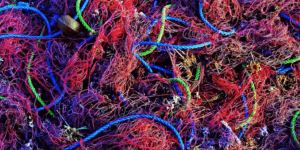
Does the Coding for Polyamides Mean Anything to Designers and Processors?
Polyamides are macromolecules with repeating units linked by amide bonds.
Polyamides occur both naturally and artificially. Some examples of naturally occurring polyamides are proteins e.g. wool and silk.
Artificially made polyamides can be made through step-growth polymerization or solid-phase synthesis. This yields materials like nylons, aramids, and sodium poly(aspartate). Synthetic polyamides are frequently used in textiles, automotive applications, carpets and sportswear due to their high durability and strength.
The coding used to differentiate individual members of the polyamide (nylon) family may mean something to a chemist (the number of methylene groups between polyamide linkages in the polymer chain – strictly the number of carbon atoms). But is the coding of any use to a designer or processor?
Well for once the chemist’s notation is helpful. As the code number increases, from 6 to 11, 12 and beyond, the polymer will look and behave more like polyethylene – tougher and better water resistance but softer, weaker and a lower heat distortion temperature.
So where does polyamide 66 come in? I am afraid we become a bit careless with the coding. PA 66 should strictly be written PA 6.6, denoting a double repeat unit, each with 6 methylene units between polyamide links. Hence the properties of PA 6.6 will not be much different from PA 6. Likewise, PA 46 should read PA 4.6, the fewer methylene units making it stiffer and stronger than PA 6 or PA 6.6. PA 6.10 will have properties slightly in the opposite direction.
Coding for polyamide copolymers such as PA 6/12 signifies that there is a random distribution of shorter methylene blocks and longer methylene blocks, with subtle differences in properties from PA 9.
Hardie Polymers
0141 952 1900
Website
Email





